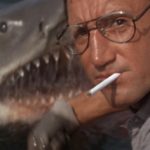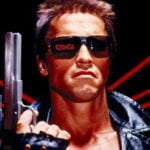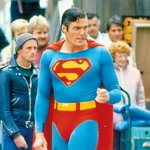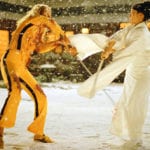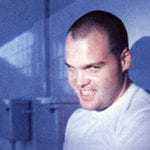 Weird Stuff
Weird Stuff  Weird Stuff
Weird Stuff  Our World
Our World 10 Ways Your Christmas Tree Is More Lit Than You Think
 Movies and TV
Movies and TV The 10 Coolest Stars to Set Sail on The Love Boat
 History
History 10 Things You Didn’t Know About the American National Anthem
 Technology
Technology Top 10 Everyday Tech Buzzwords That Hide a Darker Past
 Humans
Humans 10 Everyday Human Behaviors That Are Actually Survival Instincts
 Animals
Animals 10 Animals That Humiliated and Harmed Historical Leaders
 History
History 10 Most Influential Protests in Modern History
 Creepy
Creepy 10 More Representations of Death from Myth, Legend, and Folktale
 Technology
Technology 10 Scientific Breakthroughs of 2025 That’ll Change Everything
 Weird Stuff
Weird Stuff Ten Bizarre Facts About The Doge Meme
 Our World
Our World 10 Ways Your Christmas Tree Is More Lit Than You Think
 Movies and TV
Movies and TV The 10 Coolest Stars to Set Sail on The Love Boat
Who's Behind Listverse?

Jamie Frater
Head Editor
Jamie founded Listverse due to an insatiable desire to share fascinating, obscure, and bizarre facts. He has been a guest speaker on numerous national radio and television stations and is a five time published author.
More About Us History
History 10 Things You Didn’t Know About the American National Anthem
 Technology
Technology Top 10 Everyday Tech Buzzwords That Hide a Darker Past
 Humans
Humans 10 Everyday Human Behaviors That Are Actually Survival Instincts
 Animals
Animals 10 Animals That Humiliated and Harmed Historical Leaders
 History
History 10 Most Influential Protests in Modern History
 Creepy
Creepy 10 More Representations of Death from Myth, Legend, and Folktale
 Technology
Technology 10 Scientific Breakthroughs of 2025 That’ll Change Everything
Top 10 Behind The Scenes Facts About Dystopian Sci-fi Movies
Science fiction has the ability to transport us to entirely new worlds, to see the possibilities of the future. Writers and filmmakers often feature technology in a dystopic setting. From rogue machines to technological singularities, tech itself becomes the source of mankind’s downfall.
Major figures in the tech industry are even starting to fear their own creations. The likes of Elon Musk and Clive Sinclair worry about the rise of sentient machines. Max Tegmark has spoken about how AI could one day change the face of cyber warfare. And the late Stephen Hawking once fretted that tech would serve to manipulate political leaders and fool the financial markets.
This idea – that civilization is destroyed by the very thing that was designed to help it evolve – has fascinated movie-goers for decades. So, without further ado, let’s take a look at 10 behind-the-scenes facts about some of the most popular movies involving sci-fi dystopias.
Warning: this list contains major spoilers for many of the films discussed
Top 10 Behind The Scenes Tales About Kubrick Movies
10 Blade Runner’s Script was a Contentious Affair
Today, Blade Runner is considered a cinematic masterpiece. But in the run-up to the film’s release in 1982, others were not so sure. The script for the film was based on the Philip K. Dick novel Do Androids Dream of Electric Sheep? The author slammed the original draft of the screenplay, claiming it stripped his story of all meaning and subtlety. Dick’s opinion only changed after David W. Peoples, who had previously worked on Return of the Jedi, was brought in to rehash the script.
Meanwhile, Harrison Ford hated the idea that his character, Rick Deckard, was an unwitting replicant. Director Ridley Scott was insistent on the twist. But preview screenings of the film left the audience confused. Scott hastily tore out some of the more ambiguous scenes, including those that alluded to Deckard’s status as an android. For the theatrical release, Warner Bros instructed Harrison Ford to record voiceovers explaining what was happening during certain moments. It is said that Ford’s flat delivery was aimed at stopping the studio from using the material – something the star later denied.
Meanwhile, studio executives were on the verge of wrestling control of the project away from Scott. Blade Runner’s impressive visuals had caused the film to go over budget by millions of dollars, and the director’s fastidious nature meant he was running behind schedule. Work on the film’s ending was equally contentious, with disgruntled crew members working 36 hours to wrap things up.
Blade Runner concludes with replicant Roy Batty (Rutger Hauer) chasing Deckard across the rooftops of Los Angeles. Batty spares Deckard’s life and, in his dying moments, delivers the now-famous “Tears in Rain” speech. In the early hours of the morning, Hauer re-wrote this part of the script and pitched the scene to his boss. “It was one o’clock in the morning. I was gonna be fired at 3,” explained Ridley Scott. “And then somebody says Rutger wants you. I said, ‘Oh s**t!’” Scott marched to the actor’s trailer and listened to the revised speech. “He read it, and it was great… I said, ‘that’s what we’re gonna do.’”
9 The Terminator 2 Crew Redirected a River
At the time of its release in 1991, Terminator 2 (T2) was the most expensive film ever made, with an eye-watering budget of around $100 million. The James Cameron epic follows the journey of John Connor as he attempts to evade a T-1000 model robot that was sent back in time to assassinate him. A T-800 (Arnold Schwarzenegger) saves the day, spiriting Connor away on a Harley-Davidson. As the two make their escape through a Los Angeles canal, the T-1000 pursues them in a tow-truck. This sequence was no easy undertaking.
Firstly, the studio had to ensure the canal was completely dry for the shoot. They achieved this feat by diverting a nearby river with sandbags. The crew then built a fake wall on the canal overpass. A truck was plowed into the wall, nose-diving into the canal below. The team then realized that the truck was too tall to drive under the canal bridges. So, using a little bit of creative thinking, they came up with a scene in which one of the bridges shears off the vehicle’s roof. Arnie’s 30-foot motorcycle jump was achieved by suspending the bike from two cranes, situated either side of the canal. The Harley-Davidson was then pulled off the overpass at 35 mph, with the suspension wires limiting the force of the impact. The stunt was performed 20 times before capturing the perfect shot.
It is little wonder that T2 used up so much of its budget on special effects. A detailed miniature of the entire city of Los Angeles was created to portray the city’s apocalyptic destruction – a scene that nuclear experts praised for its realism. The crew also resurrected an old steelworks factory, blew up an office complex with hundreds of gallons of gasoline, lit up a freeway with 10 miles of electrical cabling, and staged an explosive helicopter crash.
8 The Academy Accused Tron of ‘Cheating’
Tron pioneered the use of computer graphics in the movie industry, inspiring a generation of animators to pursue a career in film. But it was actually video games like Pong and Breakout that inspired Tron’s unique aesthetics. The special effects team captured this arcade vibe by making frame-by-frame edits of live-action sequences. The scenes were originally shot in black and white, with black and white sets and costumes. This allowed animators to add Tron’s distinctive neon colors during post-processing. These edits were then combined with a range of computer generated effects, all produced using the combined talent of some of America’s biggest FX companies. For example, Magi Synthavision created the lightcycles, tanks, and recognizers. Triple-I worked on the film’s baddie, the evil Master Control Program. And RA&A designed the landscapes for ENCOM’s digital mainframe.
This process was costly and time-consuming. According to the film’s storyboard artist, Bill Kroyer, Every CG object within a frame needed six numbers to describe its position in space. So for one hundred frames – amounting to just four seconds of footage – 600 numbers were needed to describe the object’s movement. With multiple objects, things became even more complicated. These datasets were then sent to the visual FX companies, which had to input the numbers manually into their computer systems. During the rendering phase, a single frame of footage could take as long as 10 minutes to make.
Given the film’s technical accomplishments, then, it may come as a surprise to learn that Tron did not receive an Oscar nomination for Best Visual Effects. The film’s director, Steven Lisberger, explained why the Academy Awards snubbed the film: “We did all those effects in about seven months, which included inventing the techniques. The Academy thought we cheated by using computers.”
7 Videodrome Turned James Woods into a Couch
David Cronenberg is well known for his body horror. From turning Jeff Goldblum into a giant fly to making a film about paraphiliacs who get off on watching car crashes, he’s done it all. And yet, nothing quite beats Videodrome. Released in 1983, Videodrome follows the life of a TV executive called Max Renn (James Woods). To boost his ratings, Renn broadcasts a violent snuff show called Videodrome. He eventually discovers the show is being used to transmit a high-frequency signal that causes viewers to develop malignant brain tumors. An arms company, it turns out, is using Videodrome to kill people who enjoy watching content of a violent and sexual nature.
Renn’s exposure to the signal causes him to undergo bizarre changes, both physically and mentally. While watching TV on the couch, a giant slit appears in his abdomen. He then, for reasons unknown, reaches into the opening with a loaded gun. For the scene to work, Cronenberg sought the expertise of Rick Baker, the legendary effects artist who worked on An American Werewolf in London. Baker’s team ended up building James Woods into the couch itself, before gluing a prosthetic torso to his belly.
After spending several days in the form of a couch, Woods vowed never again to do a movie that involved having things stuck to his body. “He turns to [co-star] Debbie Harry and says, ‘When I first got on this picture, I was an actor. Now I feel like I’m just the bearer of the slit,’” Cronenberg recalls. “And she said, ‘Now you know what it feels like.’”
6 The 12 Monkeys Director Wasn’t Keen on Bruce Willis
In 1995, director Terry Gilliam began musing over his sixth film project, 12 Monkeys. The studio put forward a number of big name actors to star in the lead role, including Tom Cruise and Nicolas Cage. Although the role was eventually handed to Bruce Willis, Gilliam had his reservations. It is said that Gilliam even gave the star a list of “Bruce Willis Clichés,” which he was supposed to avoid during shoots. “I explained to him my concerns about him as an actor. I hated that [pursed-lip expression] he does in his films when he gets a bit nervous. I thought, ‘God, that’s horrible’… Rectal. It’s like I’m looking at somebody’s asshole.”
Willis, who was filming the third installment of Die Hard at the time, would often struggle to shake his John McClane persona. In one scene, his character was supposed to fall to the ground after taking a blow to the head. Willis quarreled with the director, claiming the injury wouldn’t immobilize him. “‘You’re not John McClane, f**k off!’” Gilliam retorted. “He just went off and sulked by a tree and I just carried on shooting on without him and finally he came back.”
Top 10 Behind the Scenes Tales About Tarantino Movies
5 District 9 was Partly Inspired by Zimbabwean Migration
While District 9 is heavily inspired by the South African apartheid, the film’s origins lie elsewhere. District 9 is set in the same world as Alive in Joburg – a short film produced by the South African director Neill Blomkamp. Similar to District 9, Alive in Joburg asks the question, “What would happen if aliens became stranded on Earth and our two species were forced to coexist with one another?” The short mockumentary shows a bunch of desperate extraterrestrials begging for shelter, water, and electricity on the streets of Johannesburg. Locals fear the aliens, accusing them of committing rape and murder. It turns out that many of these conversations were real.
“That’s actually where the idea came from,” explained Blomkamp. “There are aliens living in South Africa, I asked ‘What do you feel about Zimbabwean Africans living here?’ And those answers – they weren’t actors, those are real answers…” Blomkamp incorporated the responses into his short film, making it seem as though the interviewees were talking about space aliens.
South Africa is home to a large population of Zimbabweans. Most of the newcomers are economic migrants, who pay people smugglers to cross the Limpopo River into South Africa. Zimbabwe’s economy suffered terribly at the hands of its former president, the late Robert Mugabe. Spiraling levels of unemployment, inflation, and taxation has prompted a mass exodus from the beleaguered country.
District 9, following its release in 2009, got into hot water with another African nation. Nigerian officials attempted to ban the movie for depicting Nigerians engaging in weapon trafficking, cannibalism, and interspecies prostitution.
4 The Matrix: Reloaded Housed Low-Income Families
The Matrix Reloaded sees Neo (Keanu Reeves) return to the Matrix in pursuit of a program that helped to enslave humanity. A sentient race of machines created the program, known as the Architect, to make humans believe they were living out their lives normally. In reality, the entire population was trapped inside a simulation, while the machines used their bodies as a source of energy.
A number of programs attempt to stop Neo from reaching the Architect. An impressive chase sequence breaks out on a freeway, replete with slow motion gun fights, martial arts brawls, and vehicular destruction. Of course, this level of chaos couldn’t take place on an actual freeway, so the crew simply built one.
In Alameda, San Diego, the studio spent millions of dollars building a 1.5-mile stretch of road on an old navy runway. The project required 7,700 tons of concrete, 1,500 tons of steel, and 1,500 tons of lumber. Once filming was over, Warner Bros worked with the county to dismantle the sets. The salvaged materials were then used to make homes for low-income families in Mexico. For both sequels, 97 percent of the deconstructed sets were recycled, amounting to 11,000 tons of material.
3 A.I. Surpassed Jurassic Park’s Animatronics
A.I. Artificial Intelligence started out as a passion project for Stanley Kubrick. The acclaimed director started development of the film in the 1970s, collaborating with various writers to produce a script. But Kubrick soon realized that the technology needed to achieve his vision did not exist. With the release of Jurassic Park in 1993, Kubrick became convinced that Steven Spielberg should direct his movie. Following Stanley’s death in 1999, the Kubrick family persuaded Spielberg to take over.
A.I. shows humanity on the brink of war with its own robotic creations, or mechas. To design the mechas, Spielberg brought together a team of CGI and animatronics experts. With Stan Winston at the helm, who had previously worked on Jurassic Park and The Terminator, shooting was wrapped up in just 68 days. Some of the actors spent up to three hours in the makeup chair as artists transformed them into discarded mechas. In one scene, a group of damaged robots, played by amputees, are seen scouring a landfill in search of replacement parts. The film took advantage of Winston’s mistakes, using a mountain of failed props to populate the mecha graveyard.
One of the most sophisticated animatronics was a 3-foot-tall teddy bear. According to Winston, Teddy was even more sophisticated than the T-Rex and velociraptors in Jurassic Park. The model used during action shots housed a total of 50 servo motors – half of which were needed just to simulate the bear’s facial expressions. In a sense, the technicians became actors themselves, adjusting Teddy in real time to make sure his reactions and movements were believable.
One of the most difficult aspects of Teddy’s scenes was getting the lighting to look natural. VFX supervisor Scott Farrar explained the problem: “The giant ape in Mighty Joe Young (1998) only had an average of 700,000 hairs, and they were a foot long. This little pipsqueak teddy bear has a million and a half little hairs, and each of those has eight curve segments to it. That’s 12 million manipulations to worry about!”
2 Ridley was Booted from Blade Runner 2049’s Set
Ridley Scott did not direct the sequel to Blade Runner 2049. That was left to the Canadian film director Denis Villeneuve. As executive producer, Scott often made appearances on set, hovering over Villeneuve’s shoulder. The director eventually expressed his discomfort: “He came on set one day and, after a few minutes having him behind me, it was unbearable. I made a joke, I said to him, ‘Hey, Ridley, who’s your favorite director?’ He said, ‘Oh, I love Ingmar Bergman and Kubrick’… so I said, ‘How would you feel if you were on set directing, and you had Bergman just behind you.” While Kubrick took the comment in good spirits, he quickly got the message and left.
2049 was not the box office hit that many were expecting, falling far short of its $300 million production and marketing costs. Ridley Scott claims the movie flopped because it was “f**king way too long.” As for where the franchise goes next, Scott says he’s currently working on ideas for the next movie.
1 The Original Ending to Star Wars was Dark
In the Empire Strikes Back, Luke Skywalker (Mark Hamill) sees a vision of his own face underneath Darth Vader’s mask. Later, Vader gives Luke the iconic “I am your father” speech, before trying to turn him to the dark side. The Revenge of the Jedi leans heavily into the idea of Skywalker turning. He spends much of the film dressed in black slaying his enemies with a light saber. Many have theorized that Luke used the dark side to overpower Vader during their final confrontation. After he slices off Vader’s hand, Emperor Palpatine goads the young Jedi: “Your hate has made you powerful.”
The final episode, originally called Revenge of the Jedi, could have been much darker. One possible ending to the original trilogy would see Luke following in his father’s footsteps. George Lucas suggested to co-writer Lawrence Kasdan that Skywalker should turn after Vader reveals his face. From a transcript of the meeting: “Luke takes his mask off. The mask is the very last thing – and then Luke puts it on and says, ‘Now I am Vader.” Luke would then make it his mission to destroy the Rebel fleet. Kasdan reportedly loved this idea.
Mark Hamill is also on record saying he pushed Lucas to turn Skywalker into a villain. Harrison Ford wanted Han Solo to die fighting the Empire on Endor, caring little about what happened to his character. But Lucas decided against both ideas, believing the film needed to appeal to a younger audience.
10 Fascinating Behind The Scenes Images From Movie History
